Learn Something Sweet on this Sweet Day
Written by Gayle
It was a gorgeous day last week when Mykey (Art Director and Graphic Designer), Bethany (Marketing Director) and I (Owner and Writer) went to Fillmore to tour the facility of one of our local producers, Bennett’s Honey Farm. They are the source for our Lassen’s Label Honey. Yum!
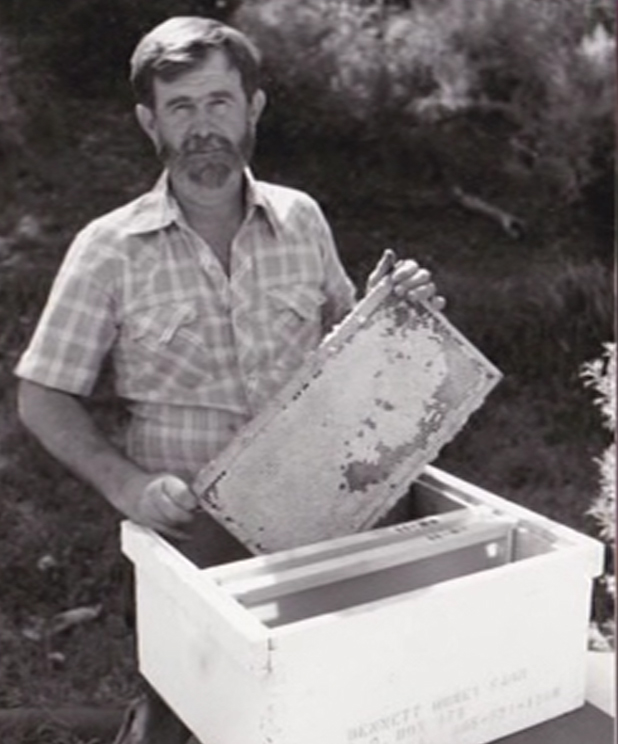 |
| photo courtesy of Bennett’s |
Bennett’s was founded by Red and Ann Bennett in the late 1970’s. A swarm of bees landed in their yard, which Red captured and thus started his beekeeping hobby. It wasn’t long before his hobby expanded into a business.
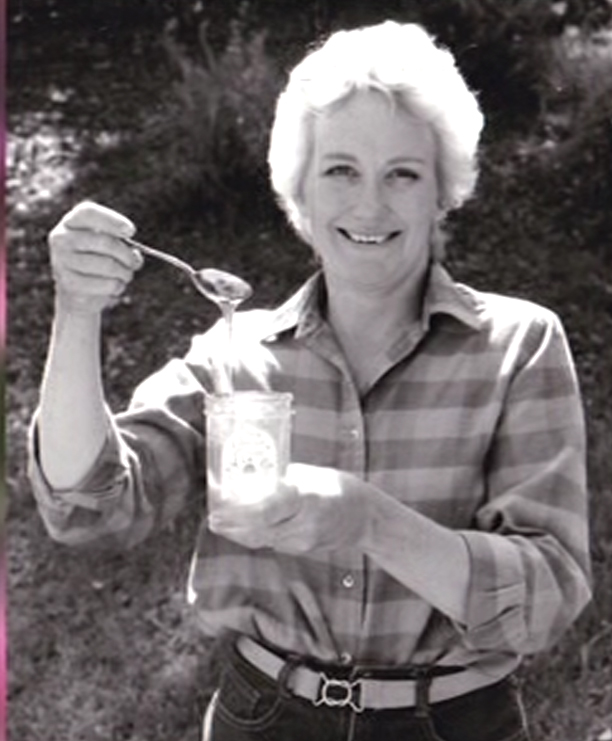 |
| Photo courtesy of Bennett’s |
Ann was happy to get out of the “rat-race” of the big city, and they worked together to build up their business. Today, they are partners with Chip Vannoy, another local beekeeper, who hosted us at their facility in Fillmore.
One of the neat features of Bennett’s Honey farm is their live hive, right in the store! The queen, here marked with a blue dot, was laying eggs when we were there.
I was happy to have glass separating me and the bees, though! (I have a not-irrational fear of bees!)
The bees are housed in wooden hives, which have individual frames where the bees build the comb. My father was a beekeeper, so I was able to tell how they are put together and what the beekeepers do to keep the bees healthy and happy! (My dad and brother built a lot of those frames in our basement during our Pacific Northwest winters!)
Did you know that when bees bring the nectar into the hive it is 70% water? Then the bees fan with their wings until a lot of the water evaporates and the nectar thickens into honey. And a bee makes less than 1 tsp of honey in its entire life. That’s a lot of work!
Once the hives are full of honey, the beekeepers bring it into the facility where the honey is extracted from the frames. The caps on the honeycomb are removed, and then the honey is spun out into big drums. The honey is allowed to settle, where beeswax rises to the top. The honey is only gravity strained–never heated higher than beehive temperatures. This is really important. Many producers heat their honey to make it easier to strain and bottle, but high heat removes the pollen and enzymes that are such a healthy part of honey. Bennett’s Honey Farm only gravity strains through cheesecloth, so the healthy pollens and enzymes are retained in every bottle–it is never filter-pressed. If you see a bottle of honey that is super clear, that’s a sign that the honey has been heated and the pollen and enzymes have been removed and distroyed. Beware clear honey!
The next step is bottling. Bennett’s has a first-rate bottling operation. The honey is fed into the bottles, lidded, vacuum-sealed, and boxed for shipping.
We even got to see some honeycomb being bottled. If you haven’t ever tried spreading a bit of honeycomb on your toast, you ought to try it!
Bennett’s also uses the leftover beeswax to make beautiful candles. They smell so wonderful!
Another great feature of this local producer is that Bennett’s Honey Farm is a Green Facility. They installed solar panels on their plant in 2005, and now they produce 100% of the power they consume. They are close to a Zero-Carbon Footprint business, too–Another reason to support this local business!
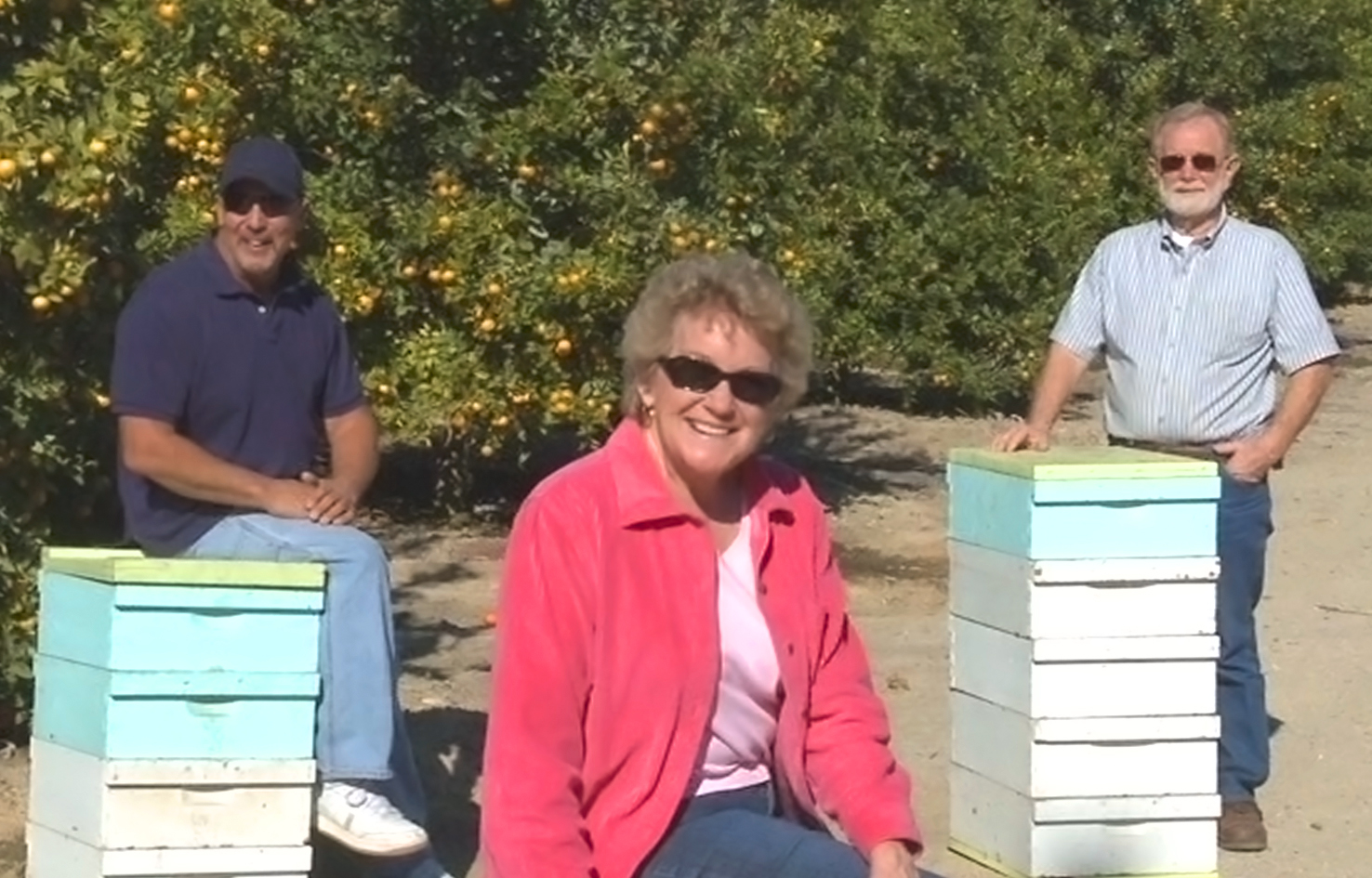 |
| Photo courtesy of Bennett’s |
Come into Lassen’s and try some of our Lassen’s Label, locally-produced honey! It is available in several varieties–Orange, Sage, Buckwheat, Clover, and more!
Love the sweet local stories–and thanks, Mykey, for the pictures!
Love,
Lassen’s






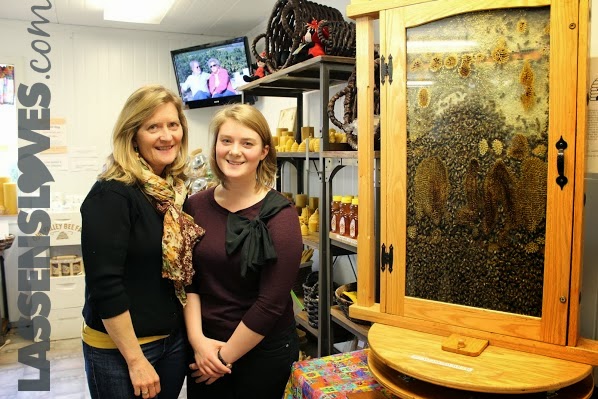

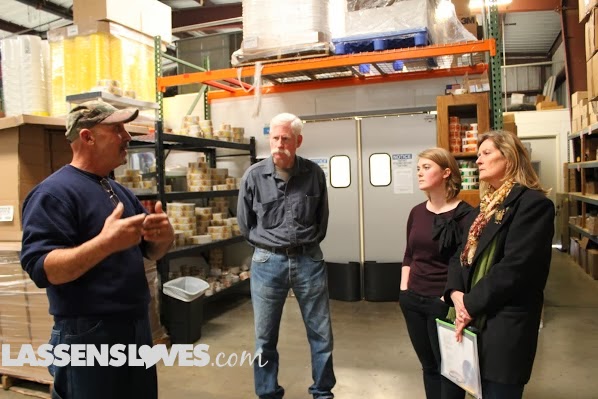
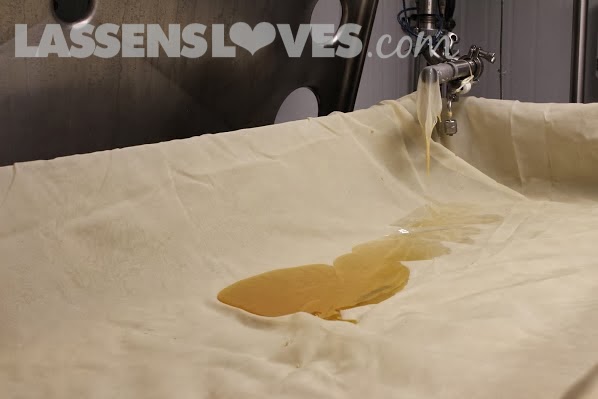

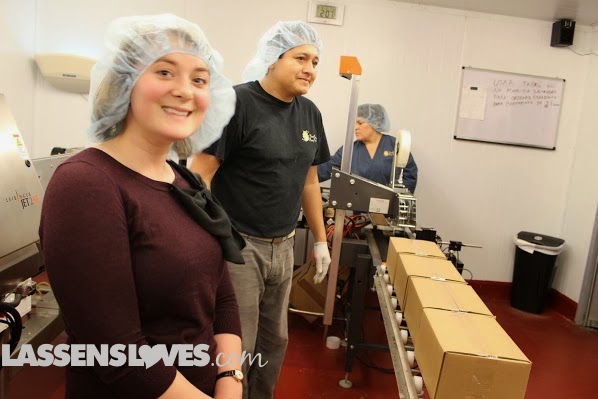



Wildflower flavor is the best.
I like avocado honey- the taste reminds me of molasses!
I like avocado honey- the taste reminds me of molasses!